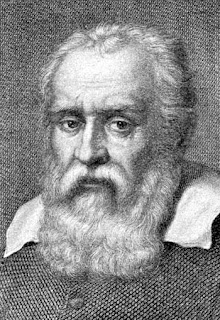 |
| Page from Galileo's Book "The Starry Messenger" |
Galileo continued to make discoveries about the planets but his writings about heliocentricity were beginning to attract unwanted attention. There are certain verses in the Bible that speak of the Earth remaining still. Galileo, anxious that the Church should endorse his ideas, began to interpret these as speaking in a strictly poetic sense (the verses are taken from books of what are essentially, poems) effectively saying that these verses were merely figures of speech, rather like the way that we continue to speak of sunrises, despite knowing that the sun does not actually rise. St Augustine, the great 5th century theologian of the West had made similar claims about these books so it was a valid interpretation. If Galileo had made these claims in the Middle Ages he would have probably have gotten away with it. But when Galileo wrote, the Counter-Reformation was gaining strength. The Counter-Reformation was the response of the Church to Protestantism and the one thing that they were determined to prevent was individual scriptural interpretation. Even if this had not been ongoing, Galileo was not a theologian and he was told to stick to what he did best and not write about theology when he was unschooled in it.
 |
| Cardinal Bellarmine |
At this stage Galileo had had an earlier run in with the Inquisition in 1616 but was released after questioning with no ill effects or stain upon his character. The question then had been about the Copernicus himself, who was now long dead. Copernican theory was deemed technically heretical but it was done in such a way that neither the works of Copernicus or Galileo were banned. This was a warning but by 1630 Galileo was on terms of reasonable friendship with the new Pope. The Pope was interested in the heliocentric theory but, with the Church under attack by the Protestants, he was concerned that the Church should only commit to the theory when it was a certainty. The Pope urged Galileo to write a book dealing with the strengths and weaknesses of the different theories and the Pope even put forward some ideas of his own that he thought could contribute to the discussion. Galileo wrote the book.
The book was a great success in terms of publishing but was not well received by the authorities. Galileo had ignored the Tychonic system and completely favoured the Copernican system over the Ptolemaic one. He had also put the ideas of the Pope into the mouth of a character (the book is a fictional conversation between three characters) called Simplicio, who as the name suggests, is consistently portrayed as an idiot. The Pope was furious and turned against Galileo. Now Galileo had to prove his case once and for all and he had to do it before the Inquisition.
 |
| Pope Urban VIII |
What about the astronomers of Europe? Intellectuals were given quite a bit of free rein in this age of intolerance. If there was a concerted plea from the learned, possibly Galileo would be spared. But Galileo’s skill at making friends had worked here as well. He would make demands for data from other scientists who by and large would share. But Galileo not only did not share his research, but also would often not even answer his letters. He would also occasionally write nasty papers about other people’s work. This was not uncommon unfortunately, but it didn’t help him make friends. Worst of all he had made a declaration to the effect that only he could discover things using a telescope. So when any astronomer made a discovery Galileo would publish a subsequent paper saying that he had seen it first. This was downright intellectual theft and so when Galileo needed friends he found he had none.
In 1633 Galileo was summoned before the Inquisition and he had to prove his case; firstly that he was in no way involved in independent theological reasoning and secondly that there was good proof for the Copernican theory. Galileo had what he believed to be a perfect proof; that the tides were caused by the motion of the earth as it orbited the sun.
 |
| Sketches of Imperfections on the Moon |
Thus armed, Galileo faced his accusers. What destroyed Galileo was the fact that some of his adversaries were scientists as well. As you may have guessed, Galileo’s theory of the tides was completely incorrect and his accusers were able to point to glaring inconsistencies. The worst by far was that Galileo’s theory predicted the wrong number of tides. With no explanation for the planetary orbits and his theory of tides and motion in tatters, Galileo (who was now an old man) was hemmed in by the power of the Church, abandoned by his friends and scientists and lacking the crucial theories and proofs that would have cleared his name. Facing uncertain consequences he signed a document abandoning Copernicanism and helio-centrism. Galileo spent the rest of his life under house arrest, in relative comfort it is true, but he was nevertheless confined. His works were banned and helio-centrism was confirmed as heretical. The Catholic Church wavered no longer and judged helio-centrism to be contrary to Scripture and as a consequence was left behind by further progress of science. Galileo died in disgrace some years after.
 |
| Galileo Galilei |
And Yet It Moves: Part I
And Yet It Moves: Part II
And Yet It Moves: Part III
And Yet It Moves: Part IV





No comments:
Post a Comment